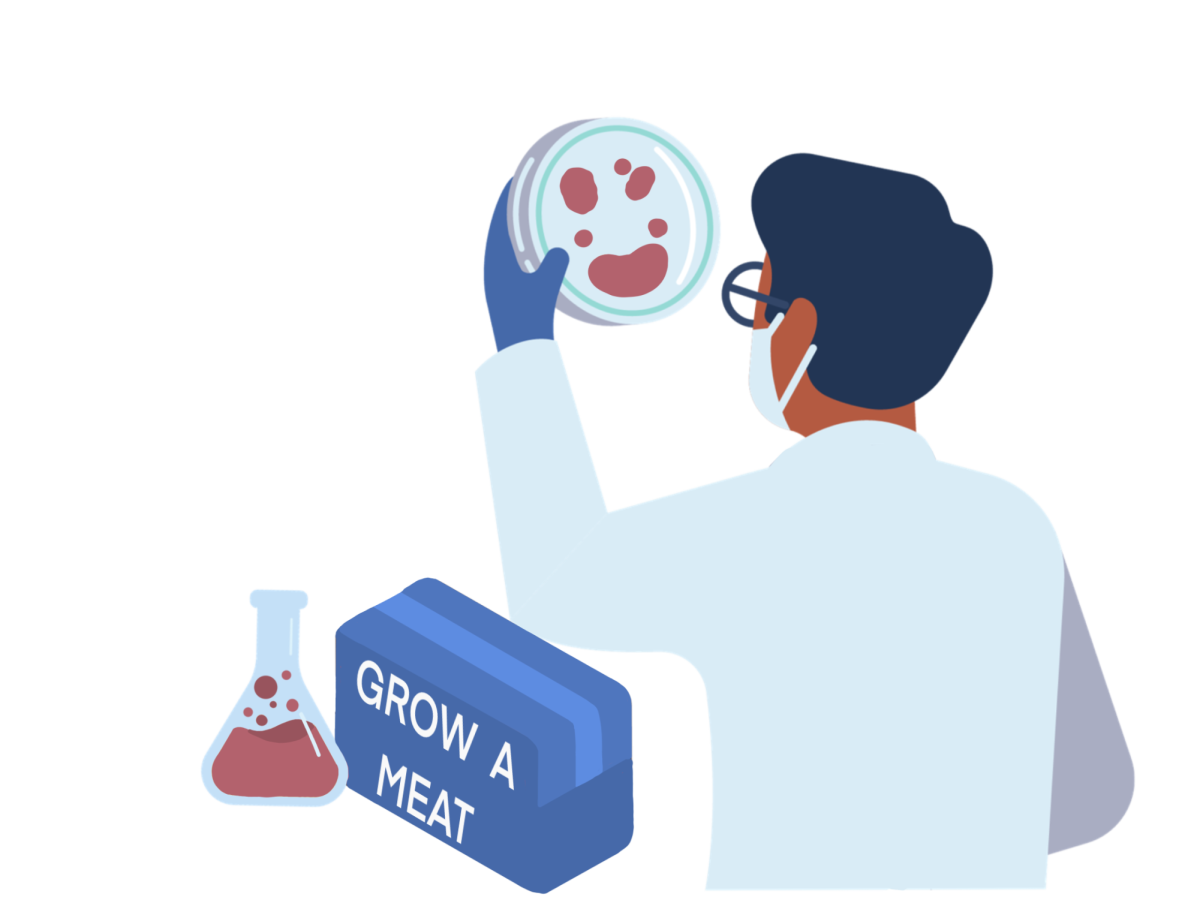A couple miles from the White House sits a restaurant called China Chilcano. While it serves most of what one would expect from a Peruvian restaurant, there is something that differentiates it from all other places. If a reservation is made, likely months in advance, there is an option to have “Anticuchos de Pollo,” or chicken skewers. This may sound relatively basic, but the meat on the skewer is not harvested from the bird, it is harvested in a lab.
Throughout history, meat has been a fundamental part of the human diet. But whether it be nomadic peoples following the migrations of cattle thousands of years ago or Gordon Ramsay preparing his famous beef Wellington, the source of meat has almost always come from one thing: living, breathing animals. Meat cultivation changes that.
To create lab-grown meat, animal stem cells are carefully gathered through non-harmful methods and placed in a bioreactor, where they are provided with the necessary nutrients to multiply and grow into muscle tissue. Using natural materials such as gelatin and cellulose to make edible scaffoldings, the cells are then formed into the intended shape: burger patties, chicken nuggets, center-cut steaks, and much more.
The result, by multiple accounts, tastes very similar to the meat that is bought from a grocery store and cooked at home. In addition, not only is there no animal slaughtered, but there is also the potential for an immensely positive environmental impact.
Currently, animal agriculture generates at least 15% of global greenhouse gasses, more than all of the transportation industry combined, and is the cause of up to 91% of the destruction in the Amazon rainforest. In addition, livestock is responsible for 65% of nitrous oxide emissions, which is 296 times more destructive than carbon dioxide. Cattle produce 150 billion gallons of methane per day, which has a global warming potential 86 times that of carbon dioxide. This is just the tip of the iceberg, and it is clear that animal agriculture is one of the most detrimental aspects of climate change.
“If you just make plants, you would just have land that’s used for the cultivation of those plants, but if you have meat production, a lot of the time you have land that is used for the cultivation of food for those animals, and then you have to provide them with water, and then those animals also need land in order to live,” Biology and Environmental Science teacher, Emily Massey-Burmeister said. “So you use more land to eat meat-based products in the conventional agriculture system than you would to just eat plants.”
Cultivated meat companies are heavily advertising their sustainability. One such company, GoodMeat, which supplies the aforementioned restaurant China Chilcano with lab-grown chicken, claims that their process will release 92% less carbon emissions and use 95% less land than livestock farming. The International Panel on Climate Change agrees, saying cultivated and plant-based meat could play a critical role in halving global emissions by 2030.
According to a 2019 study in the International Journal of Environmental Research and Public Health, if we took half of the crops that are used as food for animals, we would be able to solve world hunger. Another 2022 study in the journal Nature found that if we replaced 20% of global beef consumption with a meat alternative, deforestation would be cut in half. Lab-grown meats can help with these issues, but its success will likely be determined by the public’s response. Massey-Burmeister believes that there will be varying reactions.
“You’re always going to have that subset of the population that never eat lab-grown-meats, [however] if lab-grown meats are going to help with sustainability, I think you are going to have a market that will want to purchase those products,” Massey-Burmeister said.
Senior Taylor Pitone is one of the people who would be open to trying lab-grown meat as long as safety regulations are met, but she’s unsure if her sentiments are widely shared.
“I definitely think once [cultivated meat] is first introduced to the public there’s going to be a lot of backlash,” Pitone said. “There’s already people who don’t want to get the [COVID-19] vaccine, and so to consume meat that was grown in a lab, I know people are going to find that problematic.”
There is always going to be opposition to change, but a better planet is possible, and it can become a reality by starting at the beginning, by starting with the most basic unit of life, by starting with a cell.





